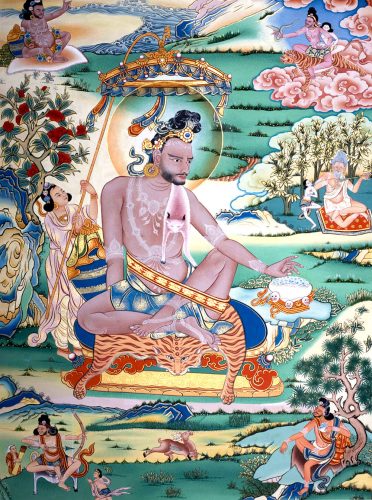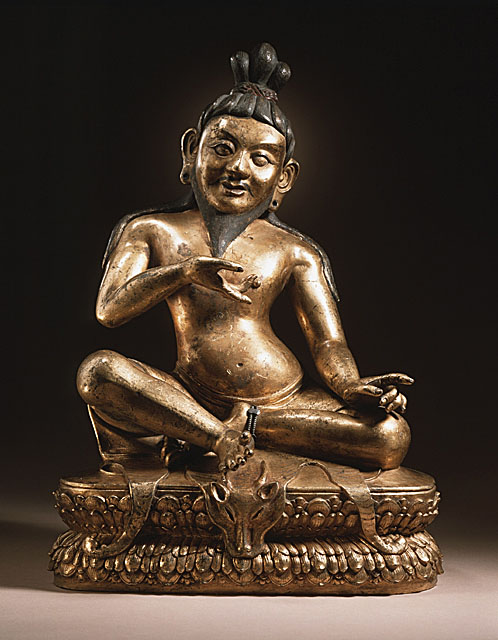Naropa was Corpulent
15 Mar

I remember sharing this anecdote of Naropa with Rinpoche a while ago and he was ecstatic to read it. He said Naropa is definitely amongst his most favourite Mahasiddhas and he definitely would have wanted to meet Naropa if that was possible. I think I know why.
Rinpoche’s sense of devotion to his teachers are what many elders in the monastery had described to be like that of old Tibet and extremely rare to find these days, even in the monastery. Amongst the many acts of his extraordinary care, attention and receptivity, Rinpoche was widely known to have saved his teacher’s life from the ravages of Diabetes. Hence, I think Rinpoche could relate to Naropa’s life and especially his extraordinary devotion, of which this great master was best known for. The following anecdote was originally from Nagtso Lotsawa’s travel writings and it is claimed to be the most reliable of surviving accounts of Naropa. What’s interesting is the fact that Naropa is corpulent in much the same manner as a grand Tibetan lama like Kyabje Pabongka Rinpoche and was probably towards his later part of his life.
————
One of the few reliable historical accounts of him comes from a Tibetan translator named Ngatso Lotsawa, who made an effort to visit Naropa at the monastery of Phullahari while waiting to visit with Atisha at Vikramashila.
Because I went alone as an insignificant monk to see the Lord Atisha —— and because he tarried for a year in Magadha – I thought I would go see the Lord Naropa, since his reputation was so great. I went east from Magadha for a month, as I had heard that the Lord was staying in the monastery known as Phullahari. Very great merit arose from being able to go see him. On the day I arrived, they said some feudal prince had come to pay homage. So I went to the spot, and a great throne had been erected. I sat right in front of it. The whole crowd started buzzing, “The Lord is coming!” I looked and the Lord was physically quite corpulent, with his white hair [stained with henna] bright red, and a vermilion turban on. He was being carried [on a palanquin] by four men, and was chewing betel-leaf. I grabbed his feet and thought, “I should listen to his pronoucements!” Stronger and stronger people, though, pushed me further and further from his feet and finally I was tossed out of the crowd. So, there I saw the Lord’s face, but did not actually hear his voice.
Mahasiddha Naropa from 15-16th Century Tibet. One of the rare statues that depict him corpulent






No comments yet